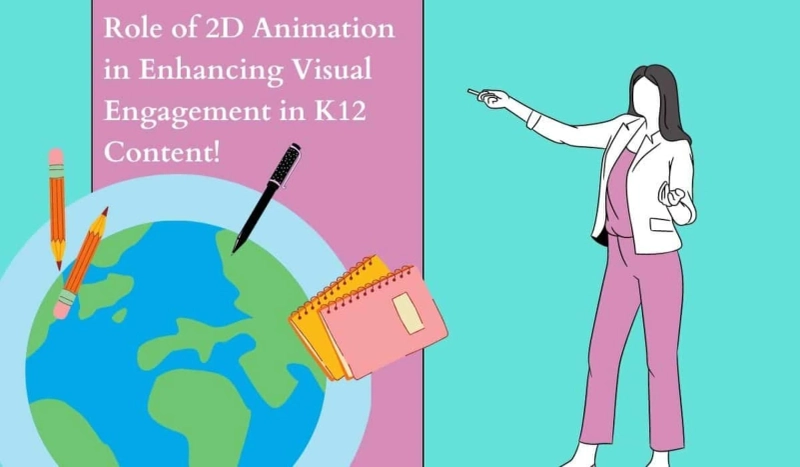Engaging a student to leave an impact on the K12 learners is highly important in K12 content. There is a need for making content engaging because some students may not find subjects such as science, history, or mathematics interesting as it takes a lot of mental effort to grasp the concepts. 2D Animation is the base tool used for making engaging content. We use technologies like immersive animation and simulations to make the concepts more interesting. This further improves student engagement and positively impacts overall learning outcomes. In this blog, let’s discuss how the use of 2D animations by K12 digital content providers in India impacts K12 Content.
Advantages of 2D Animations
Some of the key advantages of using animations in improving K-12 learning outcomes are explained below-
Provides a Better Understanding of Concepts
It is a well-known fact that K-12 learners tend to understand different topics well when the content is presented in the form of an immersive experience using animations. With 2D Animation, we use visuals for learning to present various concepts. It gives a clear picture of the lesson to the learners. The use of animation in biology, for example, makes demonstrations of body parts much more entertaining and understandable. Similarly, in physics, different examples of the topics can be demonstrated using animated characters carrying out certain tasks in order to make the concept of force more engaging and interesting.
Make The Content More Interactive
The use of animation, graphics, videos, and audio makes learning much more interactive and participatory since different learners have different learning styles. Furthermore, animated videos are short and cover specific, relevant content so learners don\'t get distracted from the concept. As a result, learners are able to develop their skills and knowledge conveniently with the help of short visual representations. By utilizing different interactive learning strategies, learners are able to interact with the course content more easily and comprehend the concepts more quickly. In addition, the retention rate is higher in this method of learning since the concepts are presented in a fun and interactive way.
Facilitates Experiential Learning
Through animation, abstract concepts are presented through virtual reality in K-12 education, allowing for greater flexibility in learning. It is dangerous for students to perform various science experiments in real-life, despite the fact that they form an integral part of learning. Through animation and VR, learners are able to perform such concepts or experiments in a much safer environment with complete accuracy. Students gain invaluable experience from doing these experiments in real life, which is something they could never gain from doing them in a lab. As learners cannot learn each concept practically during virtual classes, animation offers them an alternative through experiential learning.
Conclusion
Most of the 2D animation companies in India use animation to achieve better learning outcomes in K12 education to follow the rising trend. This trend, however, is highly beneficial for all. It not only improves engagement and students’ creativity but also helps to enhance learner motivation. Further, with thoughtful instruction design and powerful implementation strategies, we can ensure that students receive the maximum benefit in terms of better learning outcomes.



